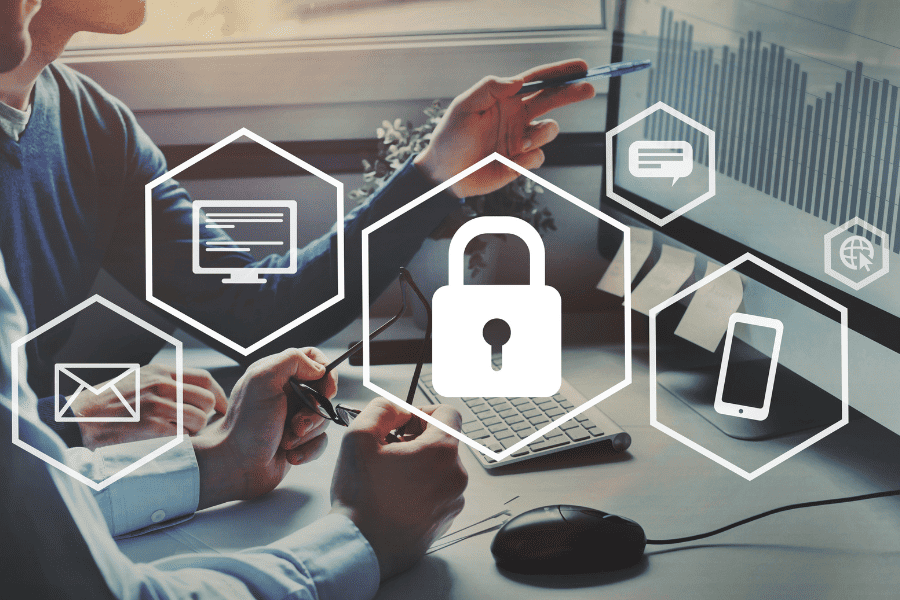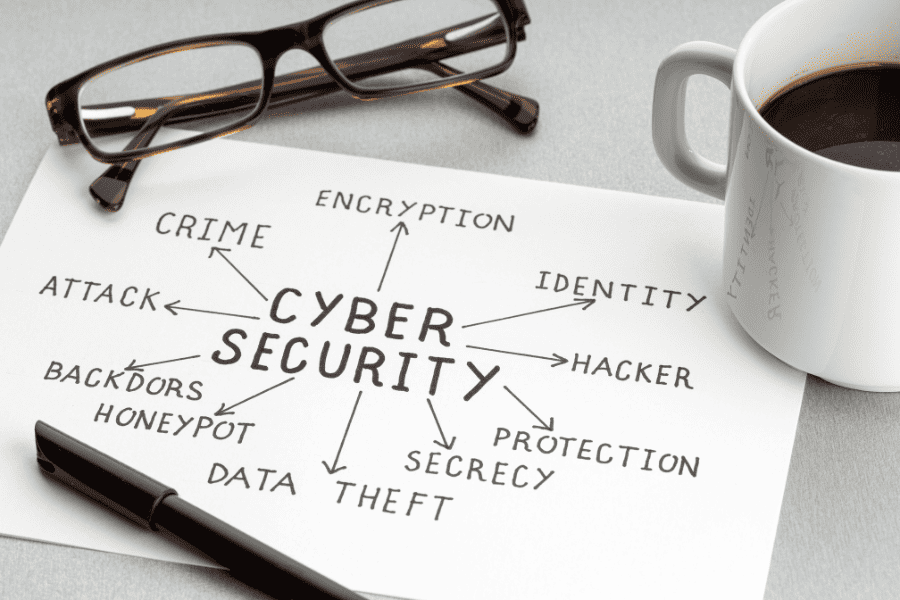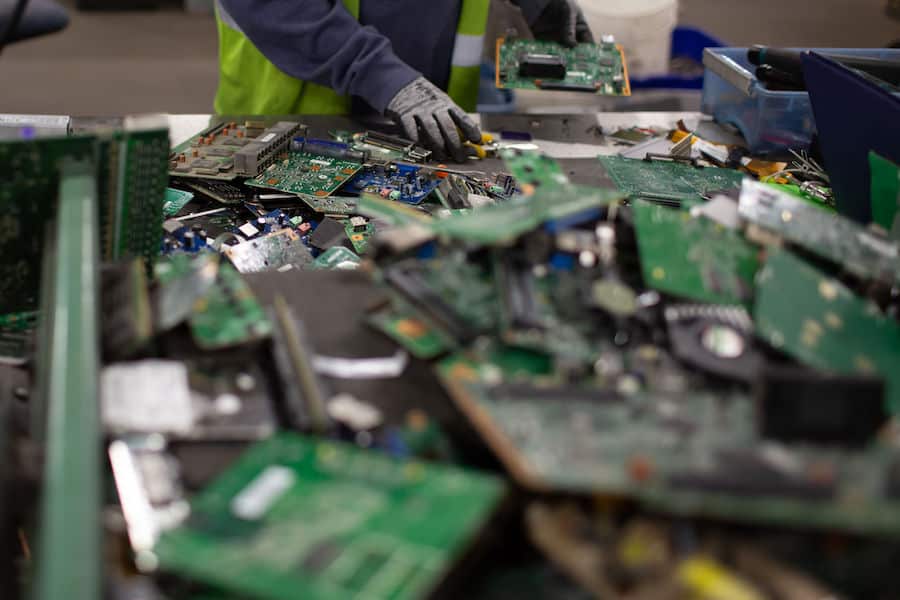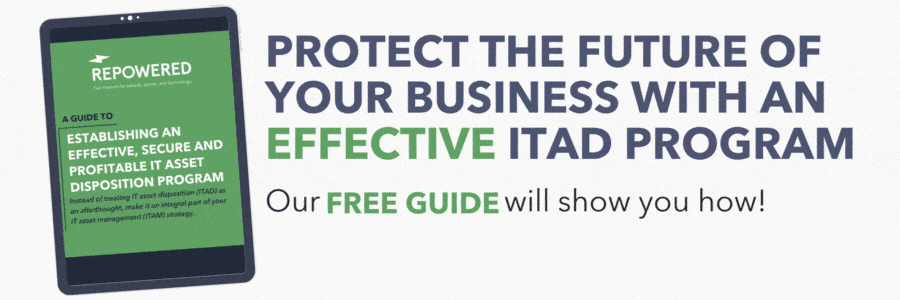
Did you know that last year, the total cost of data breaches in the US was $9.44 million? According to Verizon’s 2022 Data Breach Investigations Report, 61% of all cyber attacks were aimed at small to medium-sized businesses in 2021. Of those businesses, only a fraction were prepared for an attack.
The threat of cyberattacks is very real and should be taken seriously by every organization who wants to safeguard their clients, their employees, and their entire enterprise from having personal and financial data stolen. We believe that in 2023, every business should have some kind of cybersecurity strategy in place.
What is a Cybersecurity Strategy?
 A cybersecurity strategy is a sophisticated plan for how your organization will secure its assets and protect itself from cybersecurity attacks. This type of strategy isn’t reactive, as in, what to do if a cyberattack occurs (although it can address those scenarios). It is mainly proactive, in that it strategizes how you will prevent the attack from occurring in the first place.
A cybersecurity strategy is a sophisticated plan for how your organization will secure its assets and protect itself from cybersecurity attacks. This type of strategy isn’t reactive, as in, what to do if a cyberattack occurs (although it can address those scenarios). It is mainly proactive, in that it strategizes how you will prevent the attack from occurring in the first place.
A good cybersecurity strategy will take time and effort to develop. Once developed, it should be considered viable for 3-5 years, though it should change as the cyber threat landscape changes. A strong cybersecurity strategy can protect your assets, save you from a lawsuit, and keep cyberattacks from putting you out of business.
5 Steps To Develop Your Own Cybersecurity Strategy
1. Understand the Cyber Threat Landscape
To develop a strong cybersecurity strategy, you first need to familiarize yourself with the type of cyber threats that are most common at present, specifically for your industry. Do your research by reading reports such as the FBI Internet Crime Report or Verizon’s 2022 Data Breach Investigations Report to understand what recent cybercrime trends you need to be most prepared for.
For example, according to Verizon’s 2021 report (2022 has not yet been released), the use of ransomware saw a 13% jump – more than the 5 previous years combined. In 2022, the use of ransomware continued to rise across industries, but particularly in the education sector.
But ransomware isn’t all you need to prepare for. According to the FBI’s 2021 report, cybercrimes included the following, from the highest volume to lowest:
- Fishing, smishing, vishing, pharming
- Non-payment/non-delivery
- Personal data breach
- Identity Theft
- Confidence fraud
(The full list of 2021 cybercrime types can be found on page 22 of the FBI Internet Crime Report.)
You may also research threats your competitors have faced. This can give you a good idea of where to begin when building your own cybersecurity strategy. Additionally, consider making it a part of your monthly tasks to stay up to date on predicted cyber trends.
2. Assess Your Cybersecurity Maturity
 Once you’ve identified the potential cyber threats, you need to assess how well your organization is already protected against them. A cybersecurity framework will help you do just that.
Once you’ve identified the potential cyber threats, you need to assess how well your organization is already protected against them. A cybersecurity framework will help you do just that.
Cybersecurity frameworks are sets of documents describing guidelines, standards, and best practices designed for cybersecurity risk management. Companies use cybersecurity frameworks to:
- Identify and reduce weaknesses and vulnerabilities that hackers and other cybercriminals may exploit
- Allow IT teams to more effectively manage cyber risks
- Determine where their organizations should be in the next 3-5 years in terms of cybersecurity maturity
If you want to start small and work your way up, you can start with the Center for Internet Security (CIS) Critical Security Controls framework. Or, if you’re looking for something more robust, check out the NIST framework. There are many other frameworks out there to choose from that can help you assess your organization’s current vulnerabilities, from policies and governance to security technologies and incident recovery capabilities.
After working within a framework, you should have an accurate understanding of your organization’s strengths and weaknesses. You should also know how you want to improve over the next 3-5 years.\
Keep your data safe and your reputation secure by developing an effective, secure and profitable IT asset disposition (ITAD) program for your business. Our FREE GUIDE will show you how >>
3. Choose the Tools You Need To Improve Your Cybersecurity
Now it’s time to figure out the cybersecurity tools and capabilities that will help you reach your goals.
Many cyber threats can be mitigated using upgraded security measures and new software. TechTarget published a list of free cybersecurity tools from network mappers, to intrusion detectors, to password managers and more.
Other cyber threats, such as any social engineering attacks, are best prevented through the human element of the organization. That means educating your employees and even your clients on cybersecurity best practices. Here’s a list of 10 free cybersecurity training courses for employees that will teach them how to spot risks and avoid being victimized by cybercriminals.
4. Document Your Cybersecurity Strategy
Document your cybersecurity strategy in a way that is clear, organized, and easily accessible for all necessary parties. This will ensure that your strategy can be easily implemented and followed.
Key documents include:
- Risk assessments
- Roles and responsibilities
- Cybersecurity plans
- Cybersecurity policies
- Cybersecurity procedures
- Any other documents needed to define requirements and recommendations in order to achieve the strategic objectives
Note: Before diving into documentation, present an outline of your strategy and list of tools to upper management for approval. Additionally, make sure the involved parties are aware of their roles and agree to their responsibilities.
5. Hire a Certified Vendor to Take Care of Your Stored or End-of-Life Assets
 Finally, to complete your cybersecurity strategy, you need to evaluate your ITAM (IT Asset Management) procedures. How does your company handle its end-of-life assets, or electronics recycling? Make sure you’re not just giving away hard-drives full of sensitive information to just any e-waste recycling company.
Finally, to complete your cybersecurity strategy, you need to evaluate your ITAM (IT Asset Management) procedures. How does your company handle its end-of-life assets, or electronics recycling? Make sure you’re not just giving away hard-drives full of sensitive information to just any e-waste recycling company.
In recent years, there have been growing numbers of incidents where company hard drives have been left in storage rooms, unattended on docks, or improperly erased by vendors who didn’t follow correct procedures. Each of these examples of improper e-waste recycling has the potential to land your company or client data in the hands of a cybercriminal.
If you want to avoid a costly and potentially devastating data breach, partner with a reputable ITAD (IT Asset Disposition) vendor. An ITAD Vendor who has the proper certifications will be able to handle your company’s e-waste recycling needs thoroughly, ethically, and securely.
When shopping around for ITAD vendors, make sure they have a physically secure facility, implement proper employee training, and can provide you with a certificate of destruction.
Don’t let your company’s e-waste become a security risk. If you’re ready to implement an ITAD process, Repowered has you covered! We’re proud to be an NAID-AAA and R2 certified IT Asset Disposition vendor. We operate legally and ethically, making sure your data is destroyed and recycled with your best interest and the environment in mind. Give us a call at 612-260-9427 to learn more.
(For more tips on cybersecurity, check out our other blog, “8 Cybersecurity Tips for Executive Teams, Leaders, and Board Members.”)
Recent News & Articles

Spotify Car Thing: What To Do Once The Device Stops Working

Second Chance Month: Why Fair Chances Are So Important


